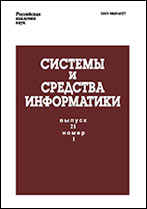|
This article is cited in 1 scientific paper (total in 1 paper)
Neural network architecture for artifacts detection in ZTF survey
T. A. Semenikhin
Sternberg Astronomical Institute, M. V. LomonosovMoscow State University, 13 Universitetsky
Prosp., Moscow 119234, Russian Federation
Abstract:
Today, astronomers are faced with a challenge of handling vast volume of data as modern astronomical surveys are capable of generating terabytes of data in a single night. One of such survey is the Zwicky Transient Facility (ZTF), an automated sky survey that provides approximately a million alerts per observational night. However, a significant part of the detected objects turn out to be artifacts, i. e., phenomena of a nonastrophysical origin. Therefore, specialists must invest time in manually classifying these objects as there is currently no efficient method that can perform this task without human intervention. The goal of the work is the development of an algorithm to predict whether a light curve from the ZTF data releases (DRs) has a bogus nature or not, based on the sequence of frames. A labeled dataset provided by experts from SNAD team was utilized, comprising 2230 frames series. Due to substantial size of the frame sequences, the application of a variational autoencoder (VAE) was deemed necessary for mapping the images into lower-dimensional vectors. For the task of binary classification based on sequences of compressed frame vectors, a recurrent neural network (RNN) was employed. Several neural network models were considered and the quality metrics were assessed using k-fold cross-validation. The final performance metrics, including $ \rm{ROC-AUC}=0.86 \pm 0.01$ and $\rm{Accuracy}=0.80 \pm 0.02$, suggest that the model has practical utility. The code implementing the algorithm is available on {\tt GitHub}.
Keywords:
neural network, data analysis, real-bogus classification.
Received: 06.12.2023
Citation:
T. A. Semenikhin, “Neural network architecture for artifacts detection in ZTF survey”, Sistemy i Sredstva Inform., 34:1 (2024), 70–79
Linking options:
https://www.mathnet.ru/eng/ssi925 https://www.mathnet.ru/eng/ssi/v34/i1/p70
|

| Statistics & downloads: |
| Abstract page: | 53 | | Full-text PDF : | 25 | | References: | 18 |
|




 Contact us:
Contact us: Terms of Use
Terms of Use
 Registration to the website
Registration to the website Logotypes
Logotypes








 Citation in format
Citation in format 
